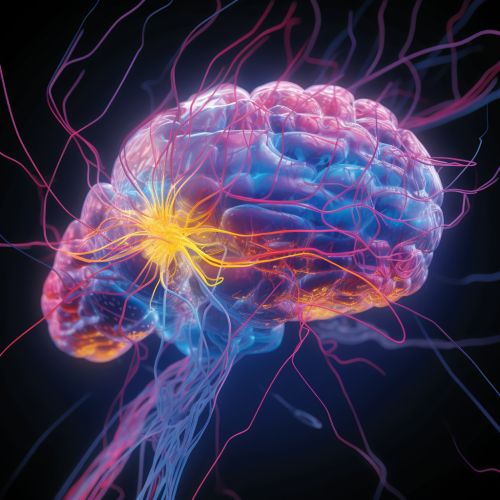Mental Representation
Introduction
Mental representation is a fundamental concept in cognitive psychology, referring to the mental imagery of things that are not currently seen or sensed by the sense organs. In other words, our brain forms representations of the world around us, so we can understand and interact with it effectively, even when the objects of our thoughts are not present. Mental representations can take many forms, such as ideas, thoughts, images, and symbols, and they are thought to be the basis of all cognitive processes.
Types of Mental Representations
There are several types of mental representations, including propositional representations, analogical representations, and connectionist representations.
Propositional Representations
Propositional representations are symbolic representations that use abstract codes or language-like symbols to represent the world. They are called 'propositional' because they can be used to express propositions or statements about the world that can be either true or false. For example, the statement "the cat is on the mat" is a propositional representation.
Analogical Representations
Analogical representations, on the other hand, are mental representations that have some of the physical characteristics of an object. They are often thought of as mental images, such as when we visualize a cat on a mat. The mental image is an analogical representation because it preserves some of the spatial characteristics of the situation it represents.
Connectionist Representations
Connectionist representations, also known as distributed representations, are a type of mental representation used in connectionist models, or neural networks. In these models, information is represented by patterns of activation across networks of simple units. The same unit can participate in many different representations, which is why these representations are said to be distributed.


Theories of Mental Representation
There are several theories that attempt to explain how mental representations work, including the Dual Coding Theory, the Propositional Theory, and the Embodied Cognition Theory.
Dual Coding Theory
The Dual Coding Theory posits that information is stored in two separate systems: one for verbal information and one for visual information. This theory suggests that when we process verbal information, we also tend to generate an image in our mind, and vice versa. This dual coding of information can help to enrich our understanding and recall of information.
Propositional Theory
The Propositional Theory argues against the idea of separate visual and verbal systems for representing information. Instead, it suggests that we represent all information propositionally, or symbolically, regardless of whether it was initially encoded as an image or a word.
Embodied Cognition Theory
The Embodied Cognition Theory suggests that our cognitive processes are not just a result of our brain, but also our body and how we interact with our environment. This theory argues that our mental representations are grounded in our physical experiences, meaning that the way we think about things is shaped by our physical interactions with the world.
Role in Cognitive Processes
Mental representations play a key role in various cognitive processes, including perception, memory, and problem-solving.
Perception
In perception, mental representations allow us to recognize and make sense of the objects and events around us. For example, when we see an object, we match the sensory information with our mental representations of different objects to identify what we are seeing.
Memory
In memory, mental representations allow us to store and recall information about the world. When we remember something, we are essentially reconstructing a mental representation of it. This is why our memories are not always accurate, as they can be influenced by other mental representations.
Problem-Solving
In problem-solving, mental representations help us to understand and navigate complex problems. We use mental representations to visualize the problem, consider different solutions, and predict their outcomes.
Conclusion
Mental representation is a crucial concept in cognitive psychology, underpinning our understanding of perception, memory, and problem-solving. It refers to the internal images, ideas, and symbols that represent our experience of the world, enabling us to interact with it effectively even when the objects of our thoughts are not present. While there are different types and theories of mental representation, they all emphasize its fundamental role in our cognitive processes.
